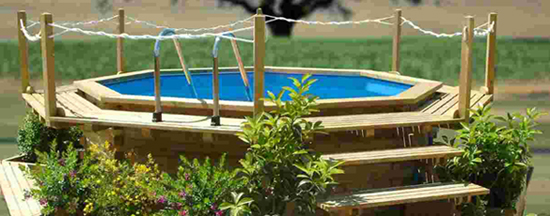
Tips for an Eco-Friendly Swimming Pool or Hot Tub
Average Rating
Rate This Article
Most Popular Swimming Pools and Hot Tubs Cities
Related Articles
Energy Efficient Windows: What to Look For Home Heating Systems: 5 Popular Options Make Your Fireplace More Efficient: 5 Optimization Tips Window Repair vs Window Replacement At Home Composting Guide Building a Sphere House Choosing an Air Conditioning System Creating a Green Kitchen Energy Efficient Window Frames: What to Look For 5 Tips for a Greener Thanksgiving The Future of Green Building Green Gutters Geothermal Heat Pumps Green Home Remodeling Projects for 2009 Home Insulation: The Key to Comfort Installing a Central Air Conditioning System Net Zero Energy Homes Organic Mechanics: Helping You Go Green Radiant Underfloor Heating Systems Radiator Art: Staying Warm in Style Solar Panel Installation & Info Straw Houses Lead New Green Building Trend 10 Energy Efficient Home Lighting Options Winterize Your Doors Winterizing Your Home the Green Way Wood Fireplaces vs Gas Fireplaces: 5 Factors to Considerby Kate Blair
Swimming pools and hot tubs are a traditional part of the American summertime experience. As the decades go by, an increasing number of Americans are adding swimming pool to their property. Although a nice in ground pool or hot tub might make you popular with the neighbors, pools and hot tubs are not the most environmentally friendly of recreational activities. They generally waste a great deal of water. On top of this, the materials often used in the construction of such leisure items are hardly eco-friendly. Still, cooling off in the pool does provide an alternative to blasting the AC. If you happen to have a swimming pool or hot tub, or wish to install one, there are several steps you can take to reduce your environmental impact.
Install a pool cover
Using a pool cover is the easiest thing you can do to lessen your environmental impact. A pool cover will prevent evaporation, which can take a considerable toll on the water level of your pool during the summer. If you keep the pool covered, it is less likely to need refilling. In addition, a covered pool will remain cleaner, reducing the need to add cleaning chemicals to the water.
Use a green cleaning service
Typically, cleaning a pool means draining it completely, and then refilling it with additional water, wasting thousands of gallons. Some innovative companies, such as Calsaway Pool Service in Arizona have thought up a way to remove the water, clean it, and replace it, thereby saving a huge amount of water from being drained away. Seek out the greener options in your area.
Decrease energy usage
Maintaining a lower overall temperature in your pool will save a lot of energy, and money. Another way to reduce your energy use is simply to keep the pool heated for a shorter amount of time. Finally, simply keeping your heating and filtering equipment in good condition will keep it running efficiently, thereby saving energy.
Create a windbreak
Surrounding your pool with plants and shrubs will provide a block from the wind. This will further reduce the amount of water lost to evaporation. In addition, plants are another easy way to improve the environment by improving air quality.
Use Eco friendly materials
If you are building a new pool, use recycled materials. Insulating concrete foam, or concrete mixed with various other materials is the basis for many construction projects. Rastra is 85% recycled polystyrene taken from old packaging peanuts and Styrofoam cups. Utilizing these particular materials makes Rastra a super insulator that will also enable you to save energy from heating your pool.
With just a little bit of care, you can greatly reduce your environmental impact, and still enjoy your time by the pool.
To learn more about eco friendly swimming pools and hot tubs, or to schedule a free assessment from a local pool and hot tub installer, contact us today!





